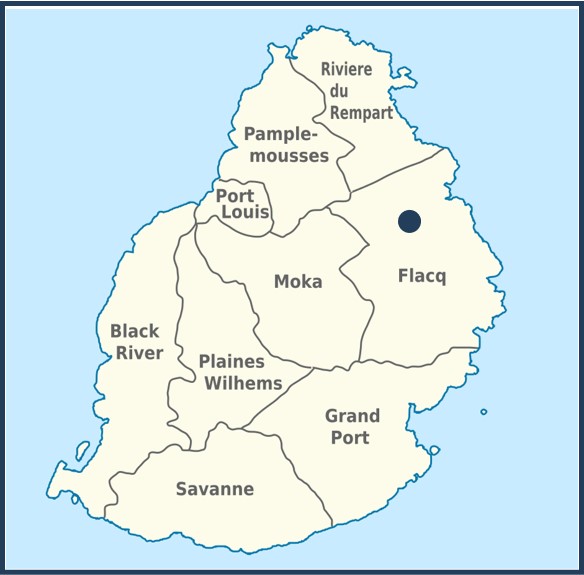
In the Central North East of Mauritius is a trio of smaller villages that encompass Petite Retraite, Bois d’Oiseaux, and Grand Retraite. Sometimes referred to as “the place that time forgot.” This unassuming area contains under 5000 people, or should I call them the ‘friendly locals’ because that is what they really are. You will also find a history that dates back centuries, quaint shops and great street foods.
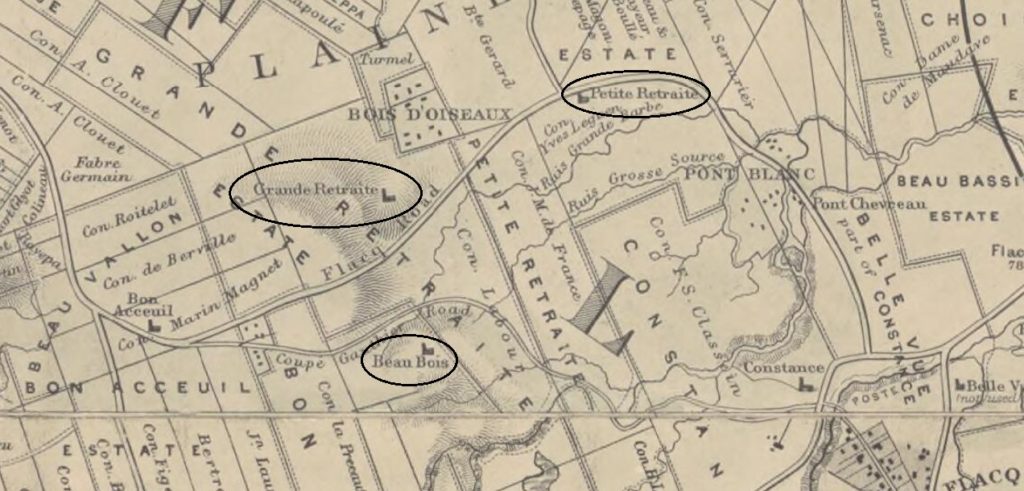
Petite Retraite – This is a national heritage sugar mill chimney, and well deserved. It is a huge and beautifully built monolith to a bygone era. The stonework and artisanship that must have gone into constructing this is truly remarkable structure puts our modern building techniques to shame. It is a must-visit, even if you do have to fight your way through near ripe and very sharp sugarcane filled with blackjack and other take-me-home seeds. Best to visit when the cane is low to the ground. Stop at the local shop and stock up on supplies before strolling over to this monument, you are going to want to spend some time admiring it.
Beau Bois – 1831 – 1906. We did not visit this site on the day because it is really in the middle of the sugarcane.
Grand Retraite / La Retraite – 1800s – 1899. Well persevere and looked after, the chimney is in near perfect condition and very easy to access. Surrounded by sugarcane it is an oasis of cleared and mowed grass, with an easy path into it. It is almost as if the locals know what a treasure they have and are painstakingly keeping it in its best condition, quietly waiting for the day when the tour buses start coming. With lots of parking and great amenities nearby I can see that day coming soon. Go ahead and put your head in one of the large doorways and take a selfie up the chimney.
Riki claims it has an aloe fibre factory, I didn’t see one, but Riki is hardly ever wrong. I take that back, Riki always turns out to be right.
It’s the blue building at the traffic light. Set in one of the best-made malls, this shopping mecca is…Ok, it’s only a shop, but they do have almost everything you need.
Including an ice-cold peach juice that the owner gave us.
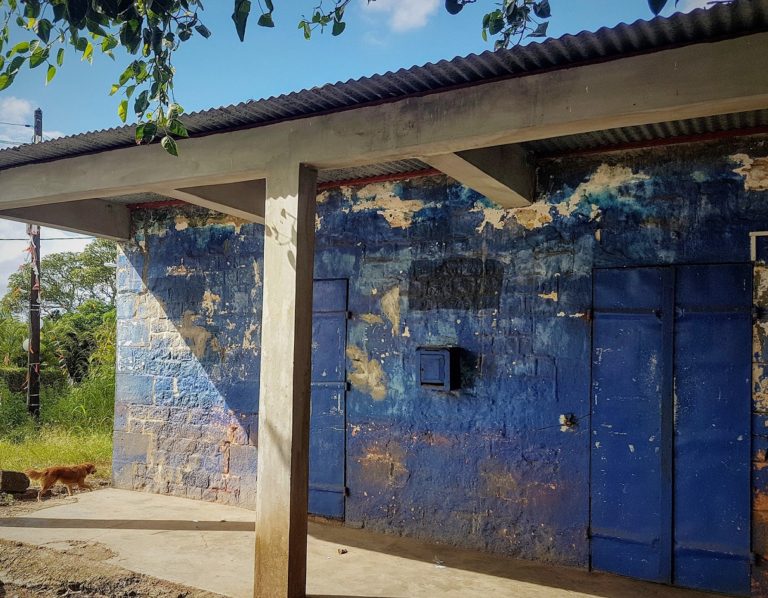
It’s set in one of the traditional houses from the late 1800s. Black stone construction with matching corrugated iron, but its been painted blue. The old owner with his huge white beard smiling down at you from his window. This is a “serve you from a window” style store, rather than a self-service. On the day we were let in to have a look around. The owner seemed most pleased by his old Kelvinator fridge, keep the beverages cold.
The old counters and shelves were probably originally from the first conversion to a shop, probably back late 1950s. I can almost see the black writing on the wall proclaiming they have “Rhum” after a devastating cyclone. The sign is long gone and the ‘newer’ Pepsi one is beginning to fade as well.
Pullover, there is plenty of parking, walk to the window and ask for an ice-cold drink, before you make your way to the chimney and the site of the Lehec murder.
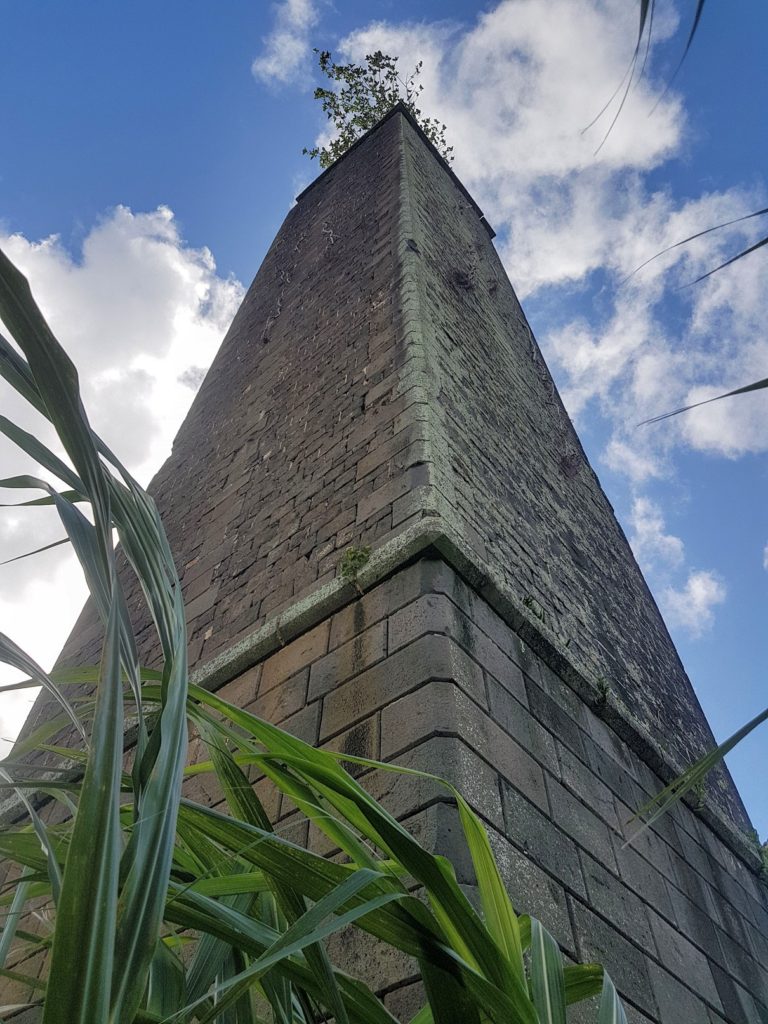
Lieutenant Lehec and his wife were by all accounts a happily married couple. She had just produced for him their first child when he was called away to Pamplemousse. So began a terrible tale of murder and torture, that ended in…well, let’s not jump the gun.
Around midnight on 24 April 1774 near the estate of La Retraite the smell of smoke was in the air. The neighbour of Lieutenant Lehec decided to investigate. That was when he saw that the house was ablaze. He ran to help, calling to all those that could hear about the calamity. As he neared the blaze, something struck him as odd, and when he realized what it was, he doubled his efforts.
Normally the inhabitants of the house are standing outside, attempting to put out the fire. He couldn’t see anyone. No Madam Lehec or any servants. As he got closer, his worst fears were realized. The burning bodies of Madam Lehec, her child, and all her servants could be seen in the house, burnt to death.
This was no tragic mistake. As soon as the investigation began, drag marks were noted going towards the house, with a trail of blood. This was now a case of murder. The police determined that the culprits must have stunned or killed everyone and placed them in the house. Someone had tried to escape and they were dragged back. The house was then burnt to cover their tracks.
Madam Lehec did not know anyone, so there were no suspects. Then they heard about a military man that would sell some items, on behalf of Madam Lehec, at the market. As this was the only lead they had they pursued it with great vigor. The soldier was arrested and questioned, but he only protested his innocence. This would not do, so they turned to torture.
Under torture, he confessed, but that wasn’t enough. The police decided that he would not have been able to perform this horrific act alone, so they tortured him to give the names of his two accomplices. They were all set to hang.
When the soldier took his place on the platform he requested to make a statement, which was allowed. He claimed his innocence and confessed he had no knowledge of the murder. He had testified under duress and asked for his god’s forgiveness. They then hung him.
Was the soldier looking for clemency with a fake retraction at his death or was that the truth. Was there a band of murders running loose around the countryside, that got away with murder. Worst of all, did lieutenant Lehec return and perform the murders himself, upon seeing his newborn child. We will never know, for now, this gruesome tale remains, in my opinion, unsolved.
I have left the title as it is because it comes from a short visit from some journalists a few years ago. I will leave a link to the article below.
I was simply amazed by what I will forever think of as Bird Antlers village, Bois-d’ Oiseaux (pronounced Bwah dwezzo).
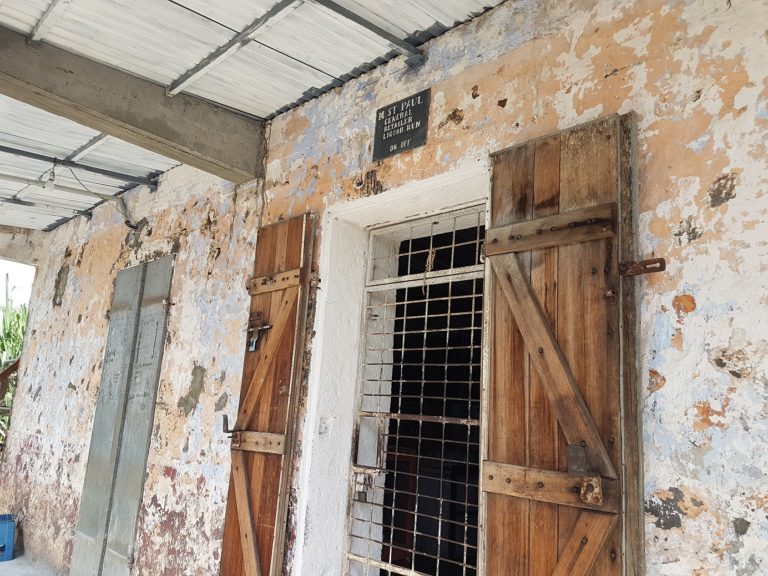
It really does start so well. You have to turn off the main road between two big important cities, onto a small, but well-maintained road. If you are not careful, you will miss it in the blink of an eye, but for those paying attention, you will have no problem seeing the huge ‘Welcome’ sign suspended above the road and the locals really believe in that word.
As with most tourists visiting this town, we were drawn to explore the farthest reach first, don’t bother. The locals have made sure anything of interest is on the main road. Moving down the main road from the end, it starts with a shine to Mary, a small undercover gathering area with a shrine to Mary as its focal point. A few dozen meters away are some beautiful fire bushes and the community hall, with a large sign claiming ‘Viva La Republic’.
Across the road is a large church. What I would term, modern, but was probably made in the seventies. Not overly remarkable, but sightly behind it is the presbytery, the place the priest lives, or at least I think it’s called that. It is a must look at, with its wide verandas and black stone, a modern representation of great Creole architecture.
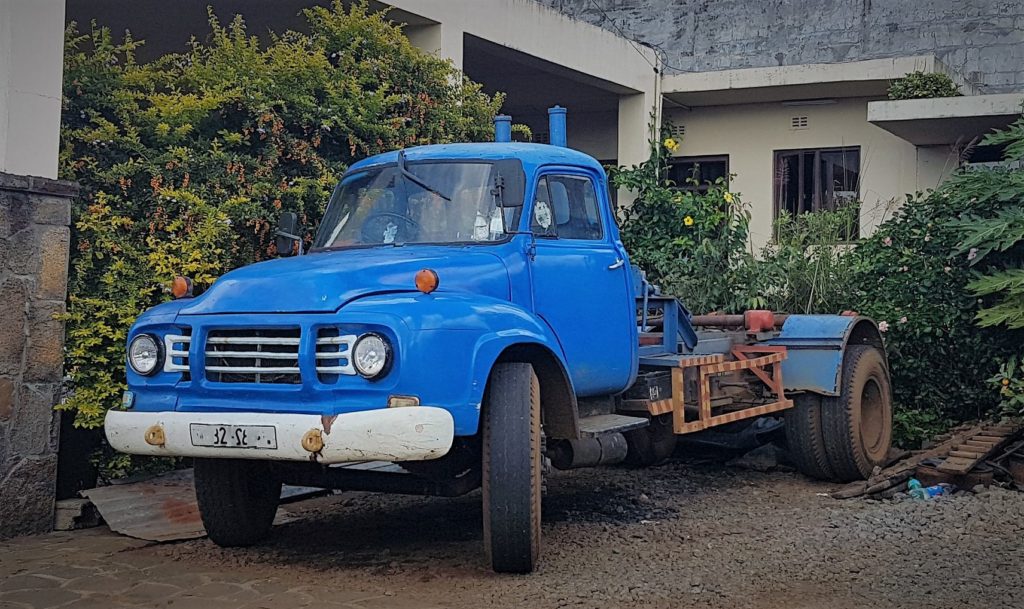
The bus stop has a chessboard painted on a rock, implying you may have a long wait for the bus, or it is a gathering point with its comfortable logs for benches and the shade of a tree. This also contains the village outcast or the guy who had a beer before noon on a Saturday. Across the way is a well-appointed shop where said beer was purchased, but it also contains most of life’s necessities.
Fifty meters of sugar cane will bring you to Saint Paul’s shop. While the shop has been handed down from father to son for the last 60 years, the building was marked on the 1880 map. On the day we visited the owner and a bunch of family members, he had obviously convinced quite a few into helping him out, were cleaning and repairing one side of the building. If the repaired side is anything to go by, the bright white building will glow in the rising of the morning sun.
We probably spent an hour or so in this quaint village where time has stood still. Which is probably enough time, but it did feel a little too short. Maybe next time I will play chess with the village outcast and enjoy a beer, not before noon on a Saturday, of course!
https://www.lexpress.mu/article/315765/bois-doiseaux-lieu-enchanteur
https://www.lemauricien.com/le-mauricien/bois-d-oiseaux-flacq-terreau-culturel/149222/
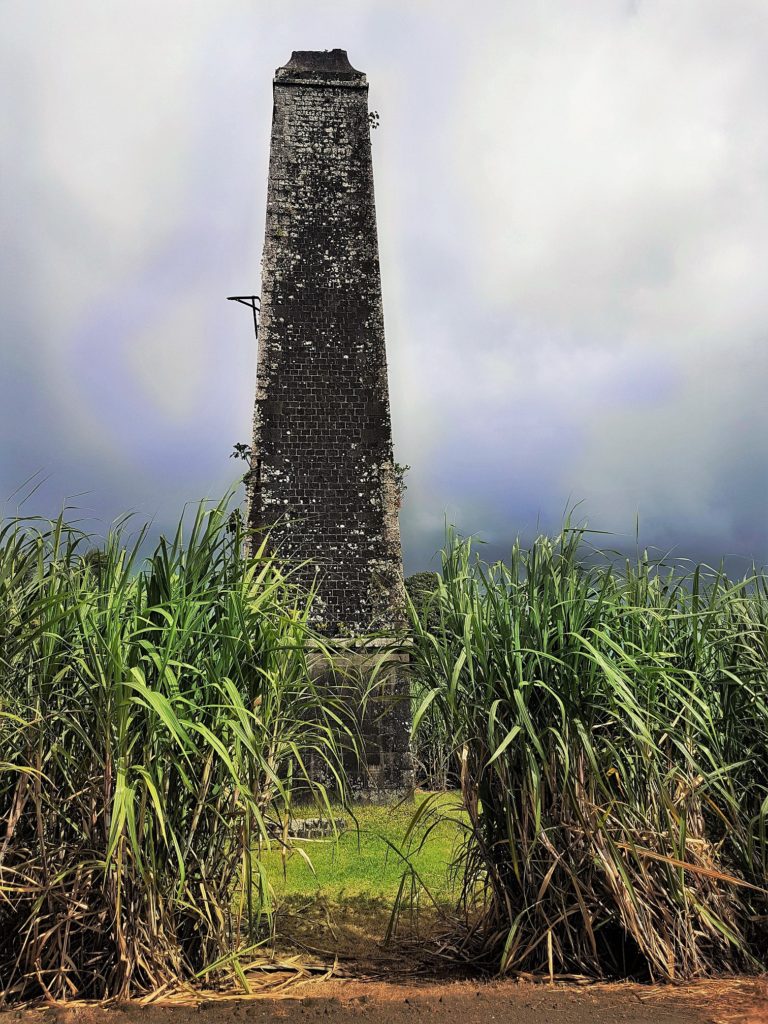
Grand Retraite was the scene of an unprecedented event in 1832, a military take over of a sugar mill.
The estate was owned by Marcelin Barry who had accused one of his 195 slaves, Isidore of theft. Barry had punished Isidore, a 70-year-old watchman at Grand Retraite, who then went to the Protector to complain about this mistreatment. When the British government went to investigate, Barry refused them access claiming that the estate along with the slaves were his property.
The Governor then ordered the military to step in and Barry chose to abandon the estate.
You can see them on Google maps under that name – Best Roti in Mauritius. I doubt the owners would have made such a bold statement, so Riki did it for them. The name is well deserved.

It’s about 50 meters down the road from the Grand Retraite sugar mill chimney. It’s a very unassuming location, a brown gate with a sad old Oringina umbrella out front. I guess they normally cater to the locals who know where they are.
Normally Riki and I would share a roti on a busy day that promised to have lots of street foods, but on this day, we decided to get one each. For those that don’t know, I’m the one that eats the chili-based foods for the show, and Riki samples the more delicate flavours that would otherwise be lost to my chili burnt-out taste buds.
Neither of us were disappointed on that day. I can’t say what Riki experienced while eating her naturally flavored roti, but if her mumblings between large mouthfuls is anything to go by it was pure perfection. The subtle balance between the mildly spiced curried broad beans, the succulent tomato relish, and the coconut chutney was perfectly balanced to create a…yip she took another bite mid explanation and it was hard to hear what she said after that.
As for mine, with the chili, “yes please, extra chili”. I need to pause here as my mouth is watering. Normally in Mauritius, your roti with chili has what I like to refer to as ‘the surprise’. You are never sure when a firey bite is going to hit the pocket of chili. They have a tendency to spoon the chili in one or two areas along the length of the roti. Not so at the Best Roti in Mauritius. The chili was carefully run along the entire length and then, in what I can only refer to as an act of genius, it was worked into the mix with the back of the spoon.
For my first bite, I wasn’t expecting much. Normally it’s a case of getting through a few bites before you hit the filling, but to my surprise, and dare I say delight, I got the wonderful filling on the first bite. I can still feel, what can only be described as fireworks going off in my mouth. For my taste, it was perfectly balanced. At that moment I confessed that I was moving to Grand Retraite so I could experience this glorious roti every day.
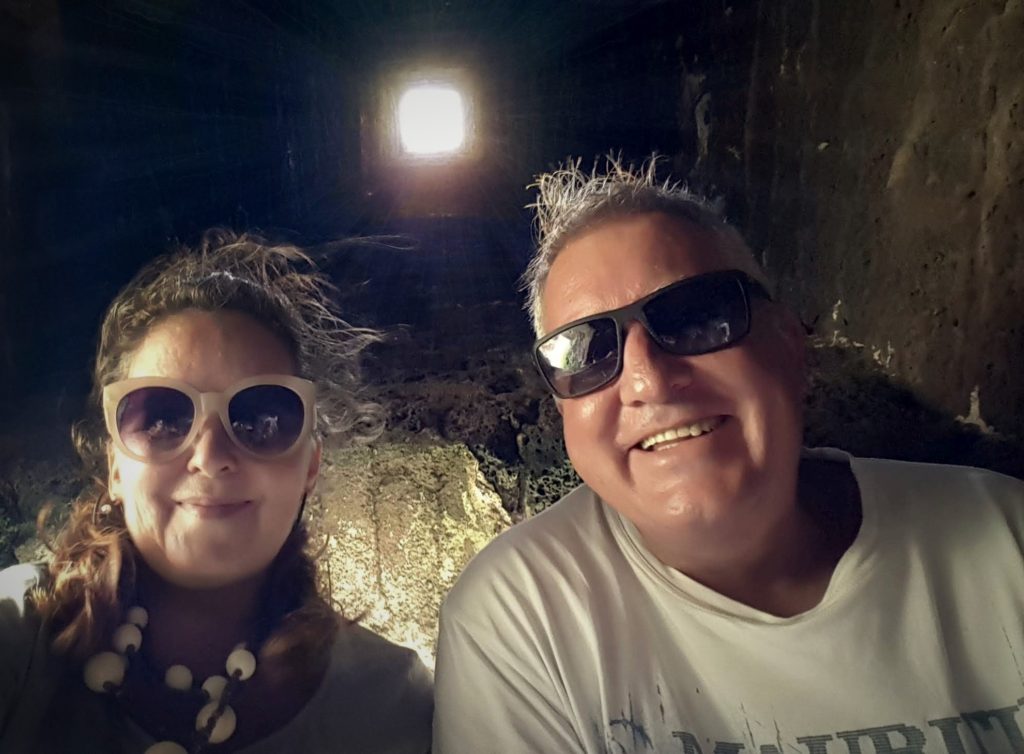
This is an extract from Mr G. Clark’s – Rambles around Mauritius (1858)
“About a mile from this (Flacq), in a northerly direction, we reach the road leading E.to the Post of Flacq, and W. to Port Louis, and near the junction of these, cross “La Riviere du Poste” by a bridge called “Pont Chevreau” and about a mile further on, the “Riviere Francoiso,”much esteemed for the peculiar softness and limpidity of its waters, in which grows in great abundance and with a development rarely to be met with in other streams, the lovely water lily called “le Nenuphar/’ (Nymphsea Stellata,) a species peculiar to Mauritius, the blossoms of which are fully expanded exactly at noon, and begin to close almost immediately after. A little beyond this bridge at the right hand side of the road is seen a splendid avenue of filaos, leading to an estate called “La Retraite,” the site of the tragedy of Mme. Lehec, related in Bolton’s Almanach of last year.
Between the fifteenth and sixteenth miles is the estate called ‘Bon Accueil,” on which the value of guano was first practically demonstrated.“
The endemic water lilies are still there, we were surprised. You can see them in our video below.
Time never forgets, so it is a testament to the friendly locals that this area makes it seem like Time has forgotten them. They work hard to repair their old building to a state that would please an 1859 blogger as they rambled around the Mauritian countryside.
For me, it was chatting with a man who spoke little English as he tried to explain how he was preserving his grandfather’s building. You can visit this place and instantly feel welcome as you explore the history, play a game of chess or savour the fresh-made foods.
One day this will become a busy region with tour buses and day trips of people all looking for that something special. For now, I suggest you get out there and enjoy it as it remains, a place that time forgot.
